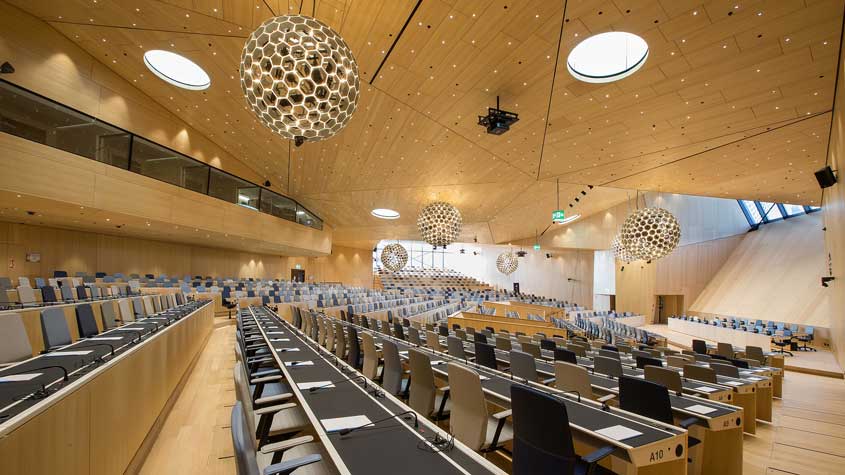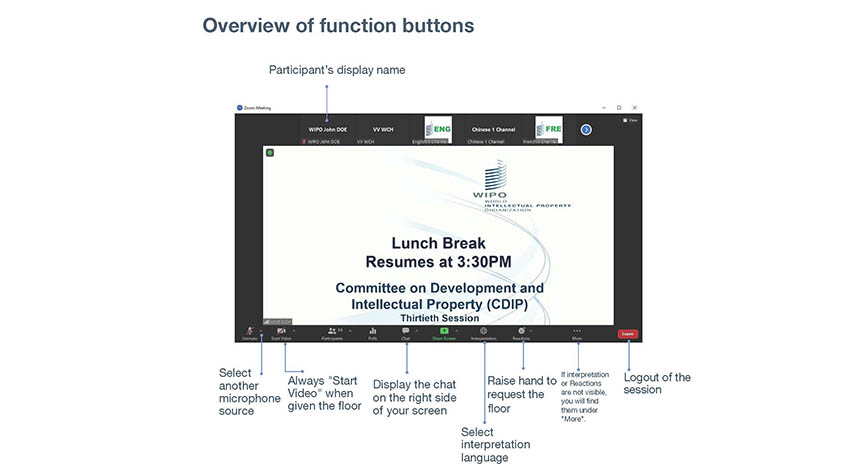WIPO Virtual and Hybrid Meetings
WIPO meetings may be held in a physical, virtual or hybrid format. Two multi-lingual, virtual conferencing platforms are available to enable delegates to participate remotely and interactively in WIPO's formal meetings from any country.
In a virtual meeting, all delegates connect to the meeting remotely using the virtual conferencing platform.
In a hybrid meeting, participation is mixed, i.e., delegates are either physically present on-site or participate remotely via the virtual conferencing platform. The audiovisual feeds (from both the platform and the conference room) are integrated and displayed in real time in both the physical and virtual meeting environment.
The invitation (convocation), accreditation process, and registration of delegates to WIPO virtual and hybrid meetings continues as normal through our usual registration system.
Each delegate participating remotely will receive an email with joining instructions and the link to the meeting space. Please do not share this unique link with other participants or colleagues.
Please respect the registration deadline stipulated in the invitation circular to allow time for the preparation of the invitation to join remotely.
Yes. Live webcasting is provided as usual, and is now available in six languages. Recordings of the virtual and hybrid meetings are also available as Video-on-Demand. Live webcasting offers an easy alternative means for non-speakers to follow the proceedings in real time from outside without having to register or go through the authentication procedures for the virtual platform. (The names of people following a meeting only via the webcast do appear on the final published List of Participants.)

- General Rules of Procedure of WIPO
- Zoom user guide for WIPO delegates



